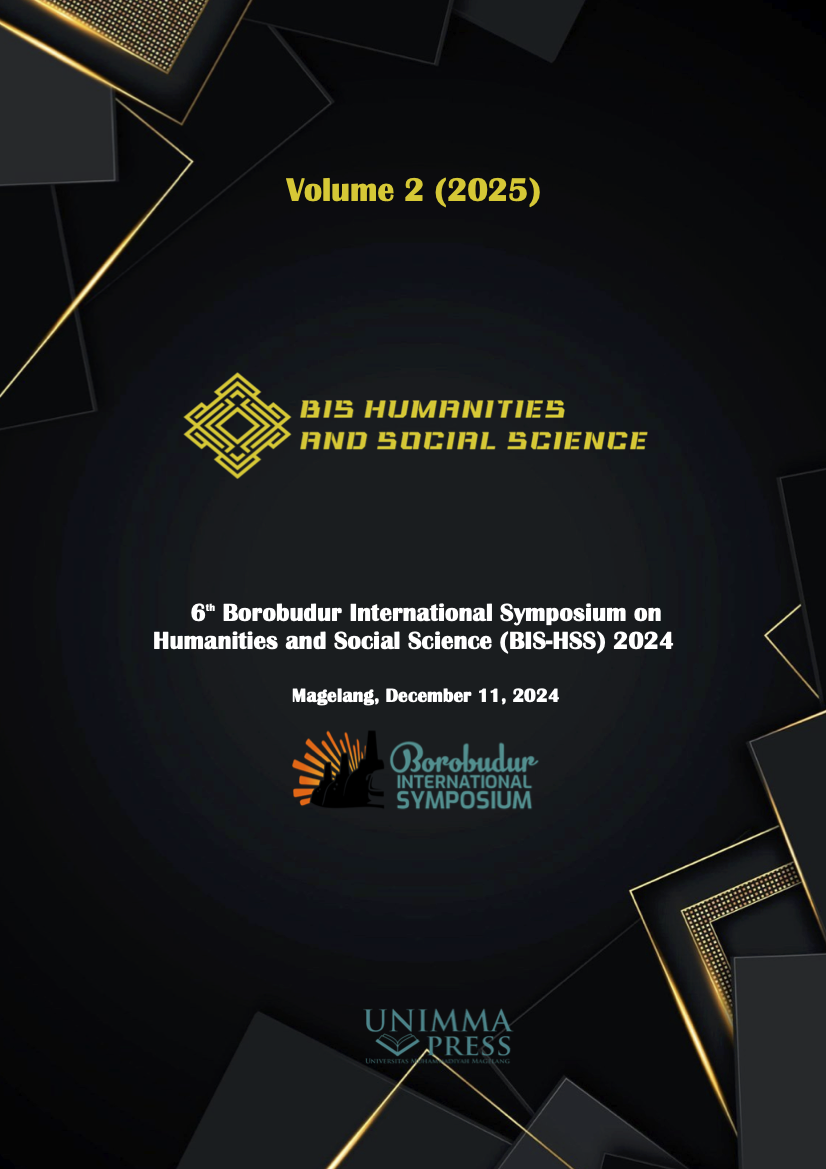A bibliometric analysis of tablet for early childhood from 2014-2024 using VOS viewer
Keywords:
Bibliometrics, Tablet, Early childhood education, Preschool, KindergartenAbstract
The widespread use of tablets across various contexts highlights their potential in educational settings. Tablets using along with technological advances can be used at home and currently the use of tablets in schools is considered. This study investigates the evolution of research on tablet utilization in early childhood education from 2014 to 2024 using bibliometric methods and VOS Viewer. Data were sourced from 195 articles identified via Publish or Perish (PoP) across databases such as Google Scholar, Scopus, Semantic Scholar, and Crossref. This study provides a forward-looking view of the development of research related to the use of tablets in early childhood education environments.
References
[1] K. Kosko and R. Ferdig, “Effects of a tablet-based mathematics application for pre-school children,” Journal of Computers in Mathematics and Science Teaching, vol 35 no 1, 2016. Available: https://www.learntechlib.org/p/148699/
[2] A. Otterborn, K. Schönborn, and M. Hultén, “Surveying preschool teachers’ use of digital tablets: general and technology education related findings,” International Journal of Technology and Design Education, vol. 29. pp. 717–737, 2018. doi: 10.1007/s10798-018-9469-9.
[3] U. T. Studhalter, P. Jossen, M. Seeli, and A. Tettenborn, “Tablet Computers in Early Science Education: Enriching Teacher–Child Interactions,” Early Child. Educ. J., no. 0123456789, 2024, doi: 10.1007/s10643-024-01766-x.
[4] S. Papadakis, M. Kalogiannakis, and N. Zaranis, “Comparing Tablets and PCs in teaching Mathematics: An attempt to improve Mathematics Competence in Early Childhood Education,” Presch. Prim. Educ., vol. 4, no. 2, p. 241, 2016, doi: 10.12681/ppej.8779.
[5] M. M. Neumann, “An examination of touch screen tablets and emergent literacy in Australian pre-school children,” Aust. J. Educ., vol. 58, no. 2, pp. 109–122, 2014, doi: 10.1177/0004944114523368.
[6] M. M. Yilmaz Genç and A. Fidan, “Children, Parents and Tablets: Preschool Children’s Tablet Use,” Pegem Egit. ve Ogr. Derg., vol. 7, no. 3, pp. 367–398, 2017, doi: 10.14527/pegegog.2017.014.
[7] K. Nikolopoulou, “Preschool Children’s Use of Tablet at Home and Parents’ Views,” Mobile Learning Applications in Early Childhood Education. pp. 209–229, 2019. doi: 10.4018/978-1-7998-1486-3.ch011.
[8] I. Passas, “Bibliometric Analysis: The Main Steps,” Encyclopedia, vol. 4, no. 2, pp. 1014–1025, 2024, doi: 10.3390/encyclopedia4020065.
[9] N. Donthu, S. Kumar, D. Mukherjee, N. Pandey, and W. M. Lim, “How to conduct a bibliometric analysis: An overview and guidelines,” J. Bus. Res., vol. 133, no. April, pp. 285–296, 2021, doi: 10.1016/j.jbusres.2021.04.070.
[10] Y. Nurani, “Bibliometric Analysis of Early Literacy Trends in the Digital Era,” J. Propuls. Technol., vol. 45, no. 3, pp. 1271–1276, 2024.
[11] A. H. Herut, “Global trends of research on advancing the pedagogical competence of preschool teachers: A bibliometric analysis,” Soc. Sci. Humanit. Open, vol. 10, no. May, p. 100947, 2024, doi: 10.1016/j.ssaho.2024.100947.
[12] N. J. van Eck and L. Waltman, VOSviewer manual. Manual for VOSviewer version 1.6.20 software documentation. 2023. [Online]. Available: http://www.vosviewer.com/documentation/Manual_VOSviewer_1.6.1.pdf
[13] A. Anzulewicz, K. Sobota, and J. T. Delafield-Butt, “Toward the Autism Motor Signature: Gesture patterns during smart tablet gameplay identify children with autism,” Sci. Rep., 2016, [Online]. Available: https://www.nature.com/articles/srep31107
[14] M. Kalogiannakis and S. Papadakis, “Evaluating pre-service kindergarten teachers’ intention to adopt and use tablets into teaching practice for natural sciences,” Int. J. Mob. Learn. Organ., vol. 13, pp. 113–127, 2019, doi: 10.1504/IJMLO.2019.10016617.
[15] C. K. Blackwell, A. R. Lauricella, and E. Wartella, “The influence of TPACK contextual factors on early childhood educators’ tablet computer use,” Comput. Educ., vol. 98, pp. 57–69, 2016, doi: 10.1016/j.compedu.2016.02.010.
[16] S. Papadakis, M. Kalogiannakis, and N. Zaranis, “The effectiveness of computer and tablet assisted intervention in early childhood students’ understanding of numbers. An empirical study conducted in Greece,” Educ. Inf. Technol., 2018, doi: 10.1007/s10639-018-9693-7.
[17] S. M. Reich, J. C. Yau, and M. Warschauer, “Tablet-based ebooks for young children: What does the research say?,” J. Dev. …, 2016, [Online]. Available: https://journals.lww.com/jrnldbp/FullText/2016/09000/Tablet_Based_eBooks_for_Young_Children__What_Does.9.aspx
[18] K. Nikolopoulou, “Secondary education teachers’ perceptions of mobile phone and tablet use in classrooms: benefits, constraints and concerns,” J. Comput. Educ., 2020, doi: 10.1007/s40692-020-00156-7.
[19] S. Pila, F. Aladé, K. J. Sheehan, A. R. Lauricella, and E. A. Wartella, “Learning to code via tablet applications: An evaluation of Daisy the Dinosaur and Kodable as learning tools for young children,” Comput. Educ., 2019, [Online]. Available: https://www.sciencedirect.com/science/article/pii/S0360131518302422
[20] N. J. Pitchford, “Development of early mathematical skills with a tablet intervention: a randomized control trial in Malawi,” Front. Psychol., 2015, doi: 10.3389/fpsyg.2015.00485.
[21] L. Y. Lin, R. J. Cherng, and Y. J. Chen, “Effect of touch screen tablet use on fine motor development of young children,” Phys Occup Ther Pediatr, 2017, doi: 10.1080/01942638.2016.1255290.
[22] S. Wollscheid, J. Sjaastad, C. Tømte, and N. Løver, “The effect of pen and paper or tablet computer on early writing–A pilot study,” Comput. &education, 2016, [Online]. Available: https://www.sciencedirect.com/science/article/pii/S0360131516300653
[23] S. Gerth et al., “Is handwriting performance affected by the writing surface? Comparing preschoolers’, second graders’, and adults’ writing performance on a tablet vs. Paper,” Frontiers in Psychology. frontiersin.org, 2016. doi: 10.3389/fpsyg.2016.01308.
Downloads
Published
Conference Proceedings Volume
Section
License

This work is licensed under a Creative Commons Attribution-NonCommercial 4.0 International License.

